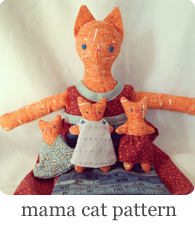Temperance. Now there’s a political issue of 100 years ago. If you’re a quilter or an appreciator of quilts, you probably bump into the Temperance movement more often than most, as the women of the Temperance movement did much fundraising through quilting, giving us a whole category of Temperance quilts.
I started thinking on making Temperance quilts after hearing this Fresh Air story a ways back. It’s an interview about a book called, Last Call, which is about Prohibition, but what stuck out for me in this story is that Prohibition wasn’t just about Prohibition, it was about other things, issues that people held closer, maybe, but they were lumped into Prohibition to reach a desired outcome.
So what is in a Temperance quilt? Uptight ladies wanting people to not have fun? Tight! No. It’s hard to see it with a modern eye. The Temperance movement and all of those women stitching their “T” quilts were also a foundation for women’s rights, speaking for suffrage and against violence against women. (Sober men were better behaved – especially important in a time when women had fewer rights.) Women making Temperance quilts were women standing up for women.
I made a Temperance quilt for today. It is liberated and has freedom of movement, but it still remembers the “T” on a grid. If I think about my freedom, it helps me to stay focused and work on where I want to be. It feels funny to shout, “Yay, Temperance!” as I am no teetotaler. I love a good drink, AND dancing, and another good drink.
I feel like there’s more to dig into here – more about the relationship between women, rights, freedoms, and alcohol and about how we make issues stand for other issues. I’m thinking this quilt will be the first in a series of Temperance quilts, the Booze Quilts.
On the technical parts of actually making this quilt:
The traditional Temperance “T” block is made of six (6!) half-square triangles. That is an awful lot of fuss for a simple T. I took the liberated approach and slashed the background with stripes of the blue and green, then added stitch and flip triangles at the corners, and finished with perpendicular strip. Then I padded each block out to 9.5 inches. Maybe I’ll post a tutorial?
After I had padding out two sides of each of 90 quilt blocks I realized that I had bought a different white on my second trip to the store. Ug! Kona white is NOT Kona PFD. I have become OK with it. This is where I am really glad I’m in a guild. I brought my blocks into a meeting and was able to share my annoying mistake with other quilters. How to minimize the difference? Debbie suggested natural batting v. white, Ginia suggested ecru thread. Everyone said that there was no way in hell I should rip it out. (Not their exact words.) But seriously, can you imagine the irony there? What would our grandmothers think of ripping out perfectly good fabric from a quilt because the white wasn’t right, and it’s a wonky quilt! We try so hard to get the make-do look that we could not possibly omit the real imperfections. That would be messed up.
My neighbor Debbie, with Bunch of Quilts, long-arm quilted this quilt for me. It is my first time having something long-armed and I kind of loved the instant (comparatively) gratification, but it’s not something I’ll do too often. I want to be better at machine quilting and Lynn reminded me about where the long-arm puts me with my 10,000 hours.
PS – Historian friends, pardon the lack of footnotes, and if I haven’t gotten it quite right, please comment back.

















{ 11 comments }
I like the thought of putting this in historical context, and of a series, too. Gives you something to think about while you’re working on it! It’s a beautiful quilt.
Thank you! Yes, it was good to find relevance in a quilt from a totally different time.
Please post a tutorial – I’d LOVE to make one of these!!!
Oh, this looks like birds in flight. The context is nicely described and makes me think there is something much deeper here. Nice done!
Thank you! Yes, I wasn’t expected the Ts to looks so much like birds, but once I got them up on the design wall, they did, and that influenced the layout.
Awesome post! Awesome quilt!!
I love a modern quilter who can not only acknowledge our quilting history but learn it, absorb it & use it in a contemporary way.
Very well done! I’ll be back!
Interesting idea for a series… Maybe there’s one about rum runners in your future.
Maybe there’s one about rum runners in your future.
I love hearing the history behind this. I never thought about digging further into the history of the prohibition era. We just watched a documentary on Newport, Kentucky (where my in-law’s came from) and their battle with prohibition. Fascinating!
It’s really hard to see the color change between the whites in a small version of the photo. But I can see what you are talking about in the large photo. I think your story of choosing the wrong white & yet leaving it be is in keeping with the history of the block. The quilt still looks great even with the mis-matched whites! And I agree with Couchy, the T’s take on a bird-like quality that is relevant & thought-provoking.
Hi, I am Lily (of Lily’s quilts) sister and came here from her Flicker favourites. And I’m glad I did because now I know that these quilts were more ant-domestic violence quilts than about people not having fun. It’s beautiful, I love it.
Post a tutorial!!! My last name starts with a T and I would love a ‘T’ quilt.
Oh I just love this post, thankyou.
Comments on this entry are closed.